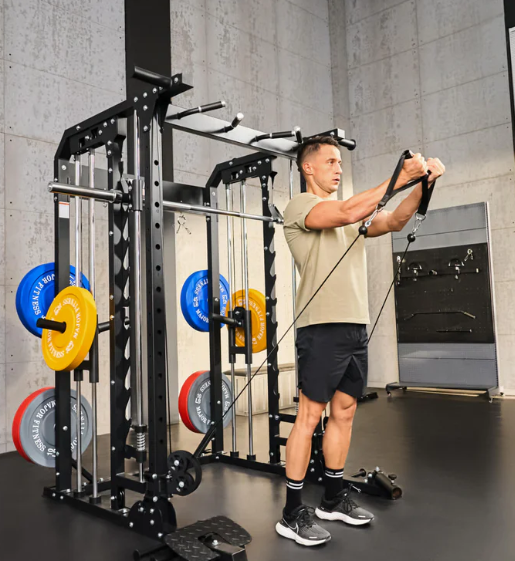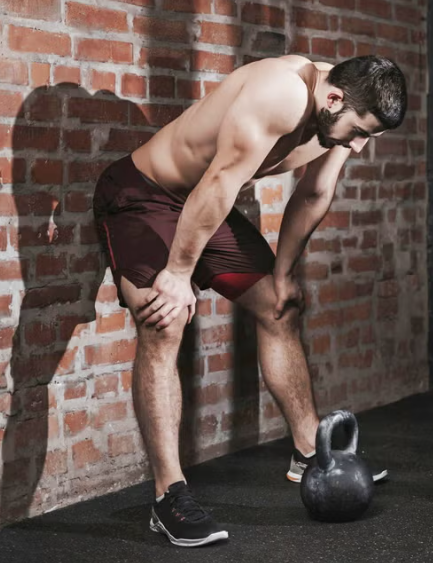
Why Just Stretching Won’t Fix Your Squat: Understanding the Root Cause
In my previous post, I discussed how tight muscles often act as a defense mechanism when our joints lose proper movement control. These muscles tighten to help stabilize the body in the absence of proper movement patterns. However, simply trying to loosen these muscles may only provide short-term relief. To truly address the problem, we need to identify and correct the underlying instability that causes the tightness in the first place.
One of the best ways to uncover this instability is through a thorough assessment conducted by a professional who understands the intricacies of human movement. A prime example of this is one of our elite lifters at Total Performance Sports, who has been struggling with lower back pain, particularly in her QL (quadratus lumborum) and the top of her glutes. She also experiences some mid-back tightness that seems to be affecting her squat performance.
Despite trying various soft tissue techniques to relieve her mid-back tightness, nothing seemed to work. This is actually a helpful sign because it means I can rule out the idea that simply massaging the tight tissue is the solution. Sometimes, we need to test different approaches before we find the right one, and that’s exactly why constant assessment is crucial in this process.
The first step in any thorough assessment is understanding the individual’s lifestyle and habits. In this case, I’m already familiar with this lifter’s routine. She recently completed law school and spent extensive hours studying for the bar exam. This meant she was sitting for long periods, often with her face buried in a book or staring at a computer screen. Sitting for prolonged periods can lead to various issues, and one of her complaints was that she struggled to activate her glutes, a common issue caused by excessive sitting.
However, before jumping to conclusions, it’s important to observe her movement patterns. To do so, I performed a series of tests that combined elements from the FMS (Functional Movement Screen) and SFMA (Selective Functional Movement Assessment). These tests included assessing her cervical spine range of motion, her ability to balance on one leg, her toe-touching ability, and several other movements, including t-spine rotation while standing.
Surprisingly, she moved well for her size—she’s a 74kg lifter who deadlifts over 450lbs. There were no major red flags when I assessed her hip range of motion (ROM) or her strength on both sides. But then, we reached a point where things got interesting. I tested her t-spine rotation in a quadruped position (on hands and knees) with her shoulder in external rotation. Here, I noticed a significant reduction in her range of motion compared to when she was standing.
What was happening? The quadruped position requires much more shoulder stability than standing. When her shoulders were in a more stable position—down by her side—her thoracic spine had better rotation. But as soon as we moved into the quadruped position, which demands more from the shoulders, her mid-back mobility was restricted.
This tells us that tightness is often linked to a lack of stability elsewhere. In this case, her inability to properly stabilize her shoulder was leading to compensation from her mid-back. To prevent injury, the body will try to stabilize the shoulder joint using the surrounding muscles, causing the mid-back to tighten.
To help address this, I gave her a few exercises aimed at improving shoulder stability. One of the exercises was a variation of the windshield wiper. She laid on her back, squeezed a foam roller between her thighs, and held a kettlebell over her shoulder, locking her elbow in place. Maintaining this stable shoulder position, she rotated her knees to the opposite side of the hand holding the kettlebell, then returned to the starting position. It was important for her to breathe steadily throughout this movement.
After a few rounds of this exercise, she reported feeling a bit better. The next step was to reinforce the posterior oblique system (the system of muscles that helps with rotational stability). To achieve this, we incorporated kettlebell armbars in both directions. These exercises helped to alleviate some of the tightness she had been feeling.
However, we weren’t done yet. These were relatively low-intensity exercises performed while lying on her back, and I needed to observe her movement under more challenging conditions—specifically, when performing squats. I watched closely as she squatted and noticed that she was losing her neck stability when coming out of the hole. This is a problem, as the cervical spine needs to remain stable throughout the squat. If it becomes mobile during the lift, the thoracic spine has to compensate, which leads to tightness in the mid-back.
Her lack of stability in both the neck and shoulder was contributing to the tightness in her mid-back. The solution was to fix these stability issues. As she worked on keeping her chin tucked and stabilizing her neck during squats, the mid-back tightness began to ease. Once we addressed these stability issues, I suggested adding some soft tissue work to help counteract the effects of all the sitting she had been doing.
This process highlights the importance of a thorough assessment. Many people with tight muscles might think they need to release that tension through foam rolling or other soft tissue techniques. While this can offer temporary relief, without addressing the root cause, the tightness is likely to return. Remember, all tightness points to an underlying lack of stability. By identifying and correcting these stability issues, your soft tissue work will be far more effective in the long term.




